Networking Strategies for Freelancers: How to Build Client Relationships
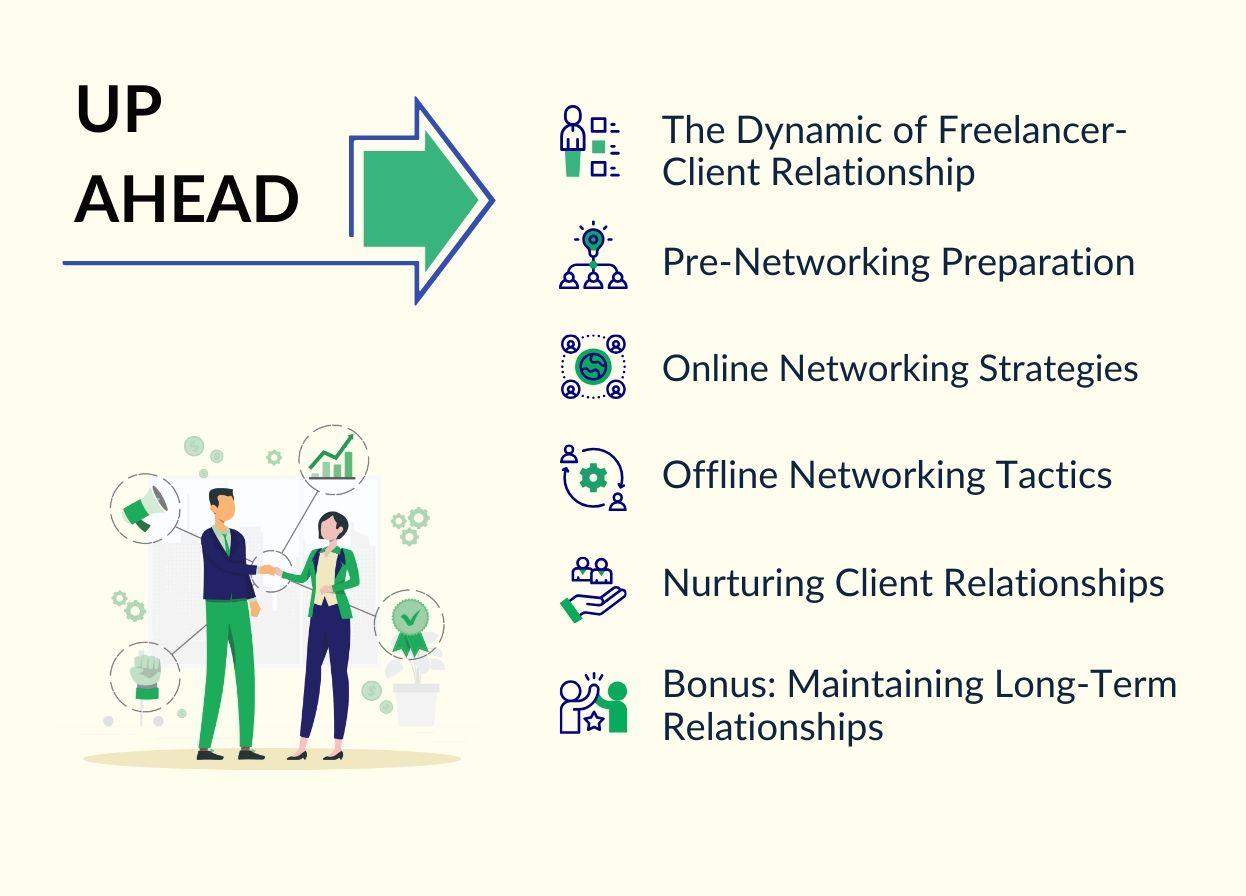

The 'Self Determination Theory' by Ryan and Deci suggests that, with work, individuals have three psychological needs: autonomy, competence, and relatability. While two out of three needs are often met, freelancers struggle with relatability as they work independently. This feeling or sense of relatability can be fulfilled by networking for freelancers and building quality relationships with like-minded individuals by facilitating the exchange of ideas, collaborating with people, and receiving leads.
However, networking for freelancers goes beyond engaging in conversations, exchanging business cards, and sharing your story. It isn't mere collecting of contacts. Instead, networking involves planting seeds of potential collaboration that go beyond transactions – relationships that are founded on trust, understanding, and mutual benefit.
Let's delve deep into networking for freelancers and understand the importance of building quality client relationships through effective networking strategies.
The Dynamic of Freelancer-Client Relationship
As a freelancer, one of the most secure investments you can make to grow your freelancing career is building strong good client relationships. The accrued trust and credibility help you gain long-term dividends as referrals and collaboration. However, the relationship is built on the foundations of mutual trust, effective communication, timely payments by the client, and a clear set of expectations from both.
The client explains the requirements, sets out clear objectives, gives continuous feedback, and provides resources to deliver projects successfully. The role of a freelancer is to understand clients' requirements and objectives and use their skills, expertise, and necessary resources to deliver quality projects. Thus, it is a collaborative relationship.
Let's understand how meaningful client relationships can boost your freelancing career.
- More Referrals: Client referrals are an underrated channel to get more work. As the freelancing industry becomes more competitive, it has become challenging for freelancers to get good clients. Referrals work like a charm. According to a freelancing study, 27% of freelancers receive new opportunities through their personal network.
- Networking Creates Career-Related Social Resources: According to the Sustainable Career Theory by Van der Heijden, the interaction of an individual with relevant stakeholders is vital to having a sustainable freelancing career. It offers social capital or resources such as ideas, contacts, knowledge and referrals.
- Offers Career Satisfaction: Networking for freelancers helps generate and maintain quality personal and professional relationships, offering better career satisfaction and a positive career outlook.
Pre-Networking Preparation
In the book 'Networking Like a Pro', authors Ivan Misner and Brian Hilliard explain that 'networking is about farming for new contacts, not hunting them.' This means networking is not about aggressively hunting for the right prospects and rushing to get them on board for short-term gains. Instead, it is about building profitable relationships by planting seeds (focusing on branding) and patiently waiting for them to produce a rich harvest. The idea is to focus on building a community first instead of directly creating a list of potential customers.
Here's how you can set the field:
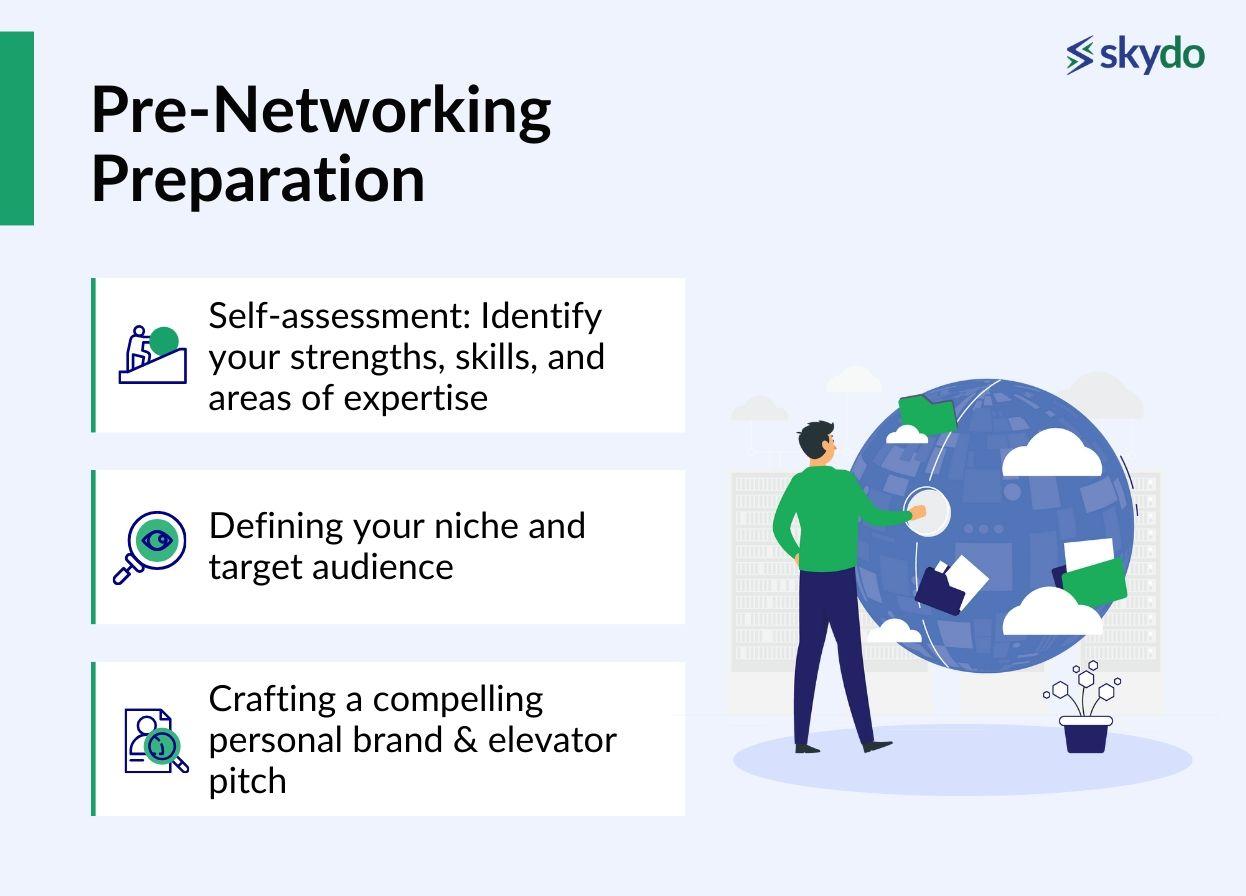
1. Self-assessment: Identify your strengths, skills, and areas of expertise
The foundation of effective networking for freelancers is based on personal branding or marketing your services by demonstrating expertise. To build a credible brand, you must assess your skills, strengths and weaknesses. You can utilise and enhance your skills to demonstrate your industry knowledge and build meaningful connections.
2. Defining your niche and target audience
The next step in your networking plan should be defining what you cater, how you cater, and to whom you cater. Networking requires a strategic approach. You cannot extremely diversify your network as it will not offer much value.
Thus, you need to narrow down your industry and the target audience you will engage with based on various factors such as profession, type of business, industry and experience level.
3. Crafting a compelling personal brand and elevator pitch
Before networking with people, follow a 12 x 12 x 12 rule. One of the 12 in this rule stands for preparing the first 12 words to speak when you meet anyone at networking events or any other place. This is also called an elevator pitch. It includes a brief intro about you and the services that you provide, and your Unique Selling Point (USP).
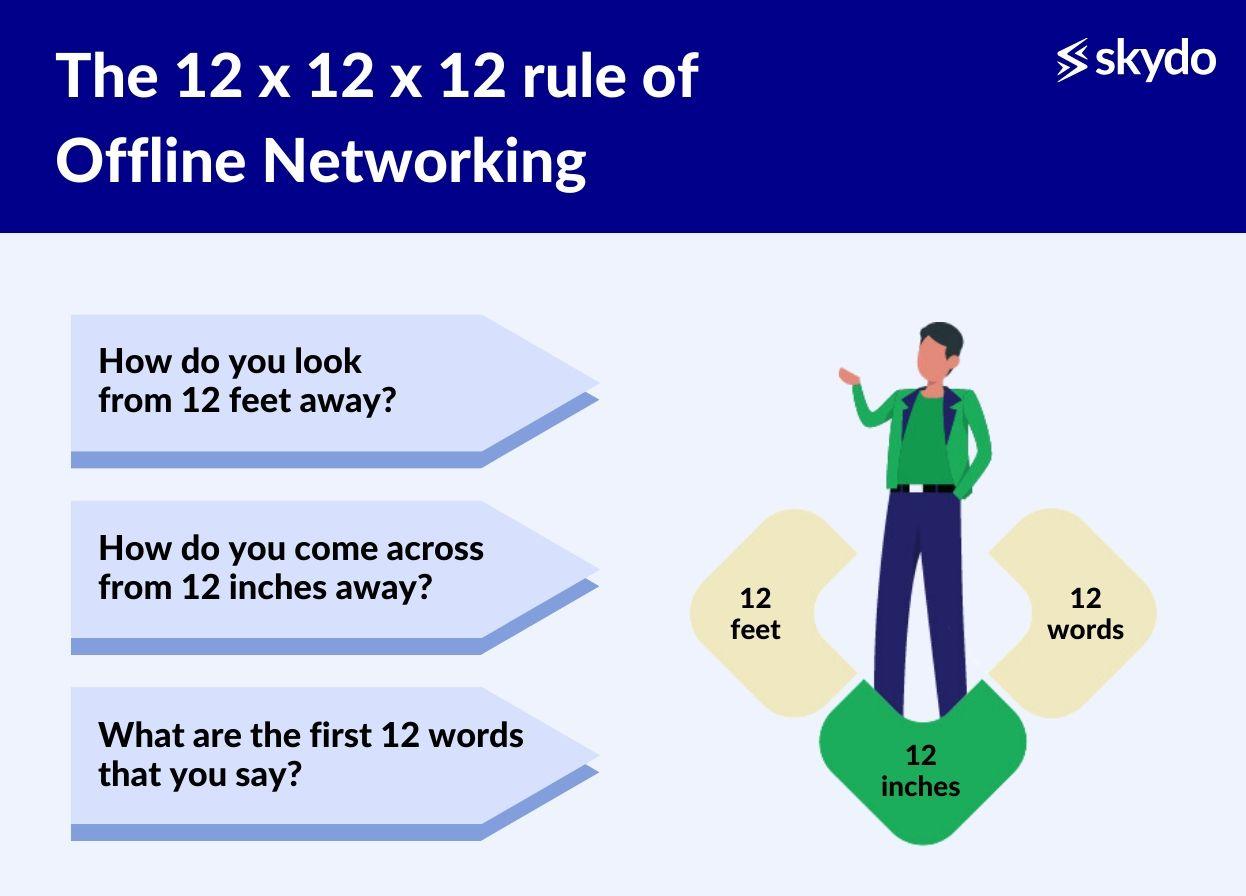
The other two 12s are explained in the “Offline Networking Tactics” section of this article.
Online Networking Strategies
The increasing use of digital technologies has made cultivating connections easier for freelancers. The following are some of the most beneficial online networking strategies for freelancers.
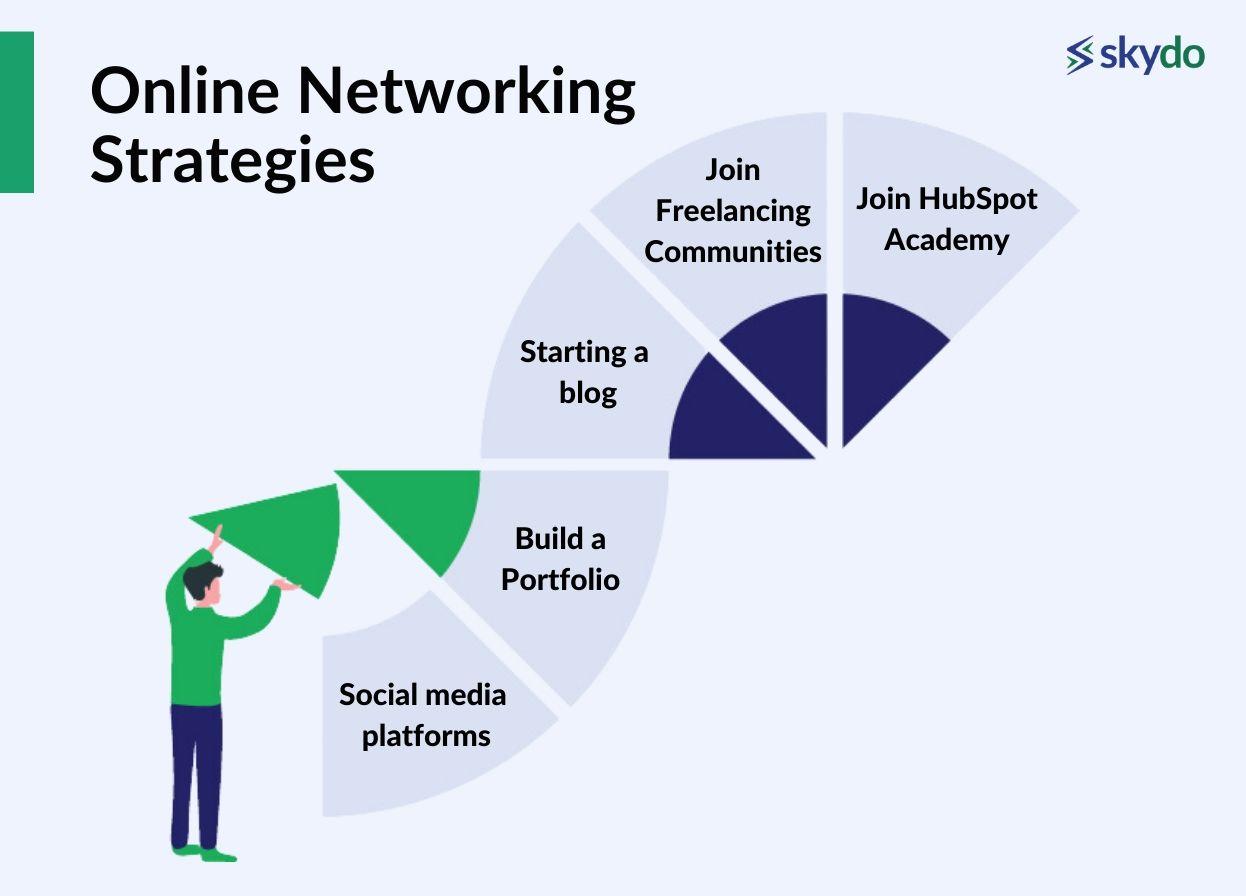
1. Social media platforms (LinkedIn, Twitter, Instagram, etc.)
Undoubtedly, one of the most popular freelance networking strategies is leveraging social media platforms like LinkedIn, Instagram and X to build a personal brand and market your services.
You can optimise your social media profiles with a professional display picture and bio. The next step is to consistently post educational or relatable content that offers value to your target audience. You should also engage with other professionals by sharing your opinions and experiences by commenting on relevant posts.
2. Build a Portfolio
Another popular way to build a personal brand and network is by creating an impressive portfolio website demonstrating your best work and case studies. You should include testimonials and success stories in your portfolio. Add the portfolio website link to your social media accounts.
Some top freelancer portfolio websites are Contently, Notion, Behance, Dribble, Wix and Squarespace.
3. Starting a blog
Writing a blog is one of the most underrated networking tactics for freelancers. You can leverage the platform to demonstrate industry knowledge, address common challenges in the respective industry and provide solutions to businesses. This gives you a competitive edge as it boosts engagement and website traffic.
4. Join Freelancing Communities
One of the best strategies for networking for freelancers is to join freelancing communities on Facebook or Telegram where you can connect with other freelancers as well as potential clients.
5. Join HubSpot Academy
You can also join the HubSpot academy to get advanced resources related to networking for freelancers.
Offline Networking Tactics
While online networking has become immensely popular after the pandemic, offline networking for freelancers is also getting back to speed. Here is how you can do it.
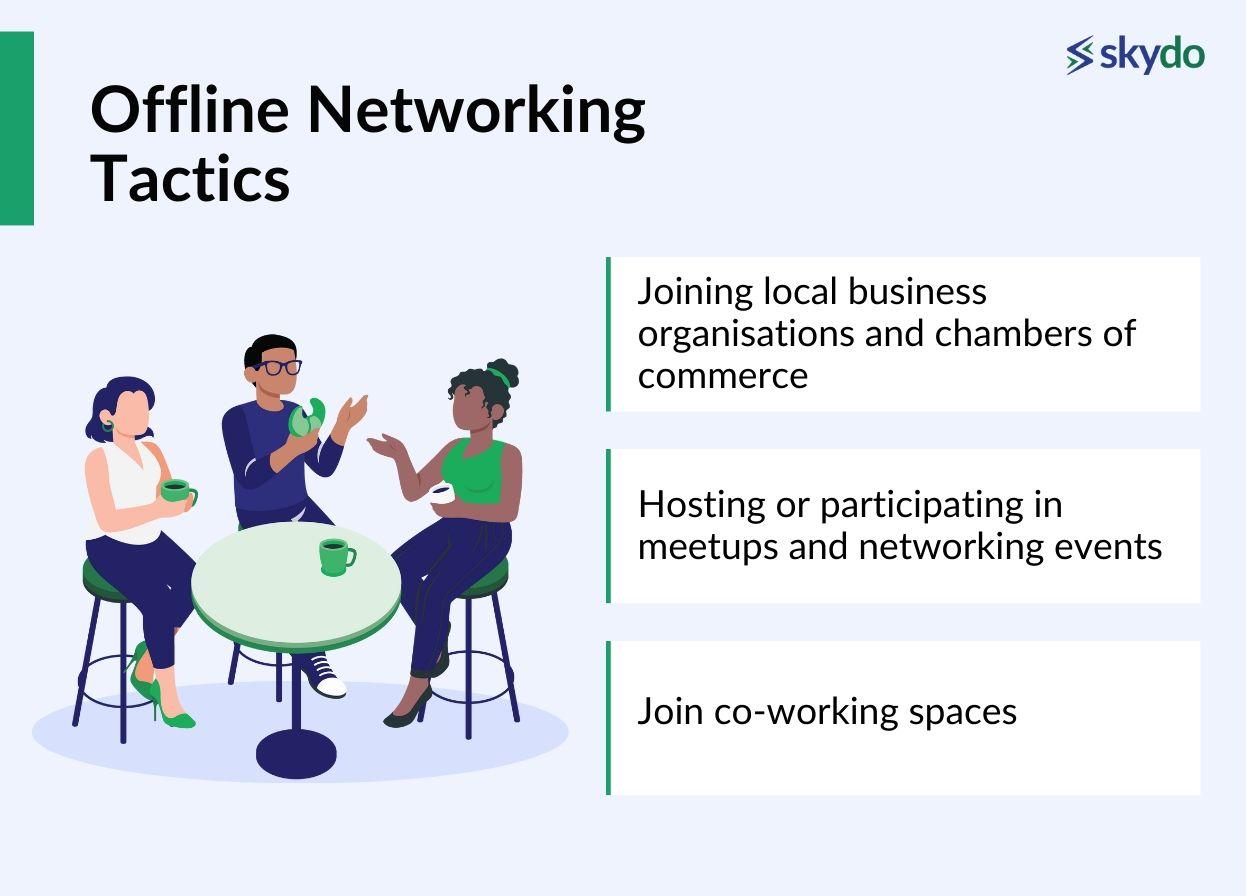
1. Joining local business organisations and chambers of commerce
You can join local business communities and be a member of various chambers of commerce for specific industries. Their events, mixers or presentations serve as a brilliant opportunity to connect with various business professionals and make them aware of their services.
2. Hosting or participating in meetups and networking events
You can host or attend small social meetups for businesses and freelancers or attend networking events.
Remember the 12 x 12 x 12 rule above? The other two 12s stand for how you appear to others from 12 feet away and how your body language seems from 12 feet away. The first part means that you should appear professional. The other part means that your body language should communicate trustworthiness, openness and friendliness.
3. Join co-working spaces
One of the best ways of networking for freelancers is to join co-working spaces and connect with other entrepreneurs and professionals. This helps build new connections and facilitates the exchange of thoughts and collaboration ideas.
Nurturing Client Relationships
In the book, 'Never Eat Alone', Keith Ferrazzie explains that trust is the cornerstone of relationships and it isn't built by asking what others can do for you but what you can do for others. It is based on generosity and not greed. Therefore, to nurture your client relationships, you should never keep score. Instead, here are some effective networking tactics or networking strategies that you can follow:
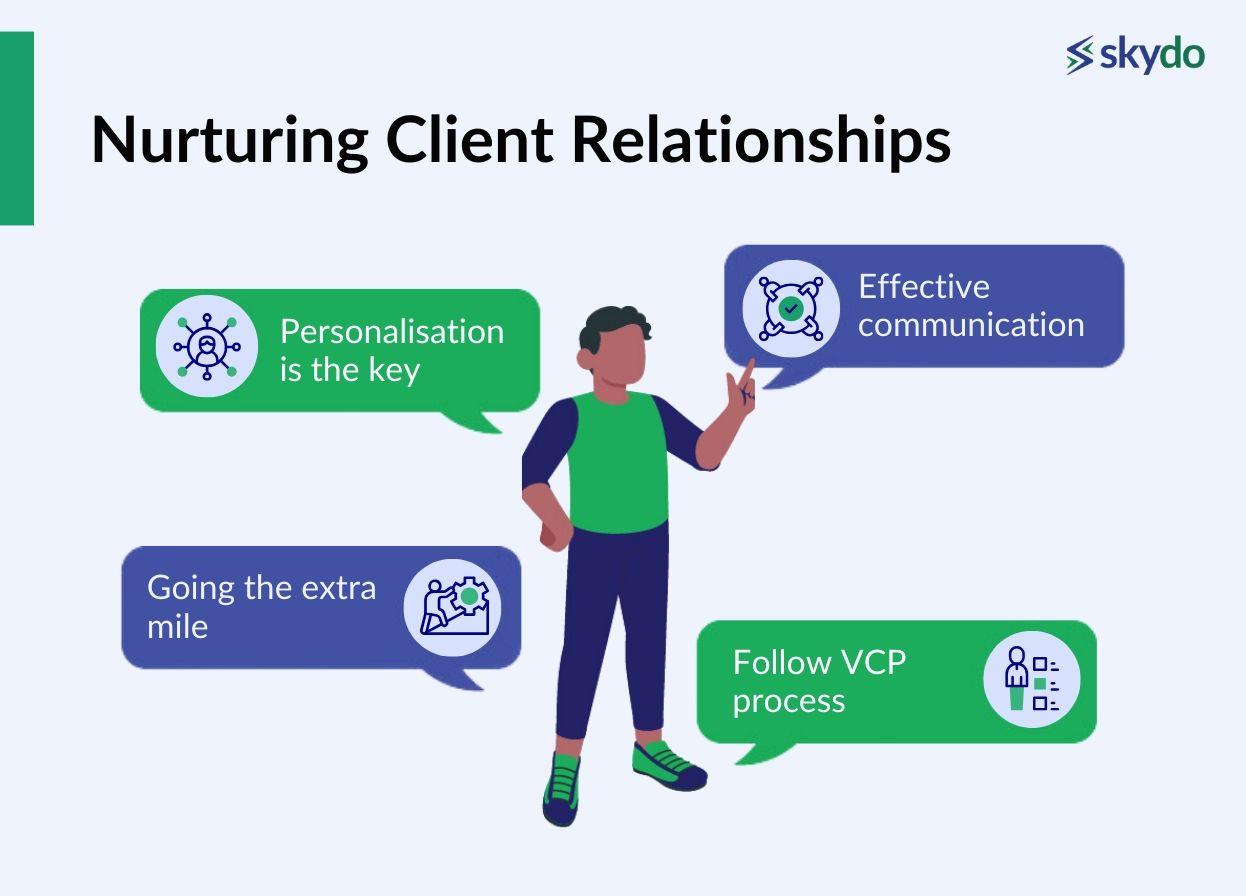
1. Personalisation is the key
Every customer has a distinguished set of business challenges, goals and requirements, a template approach does not work. Hence, personalisation is a powerful element of successful networking. You need to tailor your approach, services and communication style to cater to their individual needs.
According to a McKinsey report, 71% of consumers expect personalised interactions. Moreover, personalisation helps businesses increase their revenue by 40%. Interestingly, 78% of customers are likely to repurchase and recommend businesses that offer personalised services. Thus, personalisation is extremely crucial in the digital age.
Personalisation can be divided into four actions steps:
- Meet the client halfway
- Know their tastes
- Offer something exclusive for them
- Check regularly with the client
You can ask them personalised questions about their business such as what made them start the business and the type of clients they work with. In essence, you should be genuinely interested in knowing more about the client and their business rather than seeking superficial information.
2. Effective communication
Active listening and prompt response are two of the most crucial elements of building effective client relationships. Communication does not refer to only connecting with the client regarding project queries and updates. Effective communication includes the following actions:
- Offering relevant service recommendations
- Tailored messaging
- Providing targeted promotions
- Celebrating milestones
- Following up with the client after the purchase
- Addressing communications personally to them
3. Going the extra mile
Another way to nurture client relationships is to offer them valuable insights without sounding too sales-y. You can also offer complementary services, or additional resources beneficial for their business. The thumb rule is to under-promise and over-deliver by providing timely delivery and excellent quality services that exceed their expectations.
4. Follow VCP process
Building and nurturing quality client relationships requires a lot of time and effort. You can follow the VCP process to enhance your networking strategies. It follows these three stages.
- Visibility: In the first phase, a prospective client is aware of your freelancing services through referrals or personal branding. There is also initial communication with the client but it is yet to turn into something material. This is the crux of networking. Without this stage, you cannot build client relationships.
- Credibility: During this stage, the client slowly builds trust by regularly communicating with you. This is your chance to enhance your credibility by offering them valuable insights, rendering services, and meeting their expectations. Here they turn from a prospective lead to a client.
- Profitability: Lastly, in the profitability stage, client relationships should become mutually rewarding. The client should benefit from your services and you should be generating good profits from the client's business and the referrals they provide. In return, you help them scale their business.
Following this process helps you assess the status quo of your client relationships and prepare how you can take it to the next step.
Bonus: Maintaining Long-Term Relationships
Building client relationships is not a one-off thing. You must make consistent efforts to keep them engaged and loyal. The few steps to achieve this are as below.
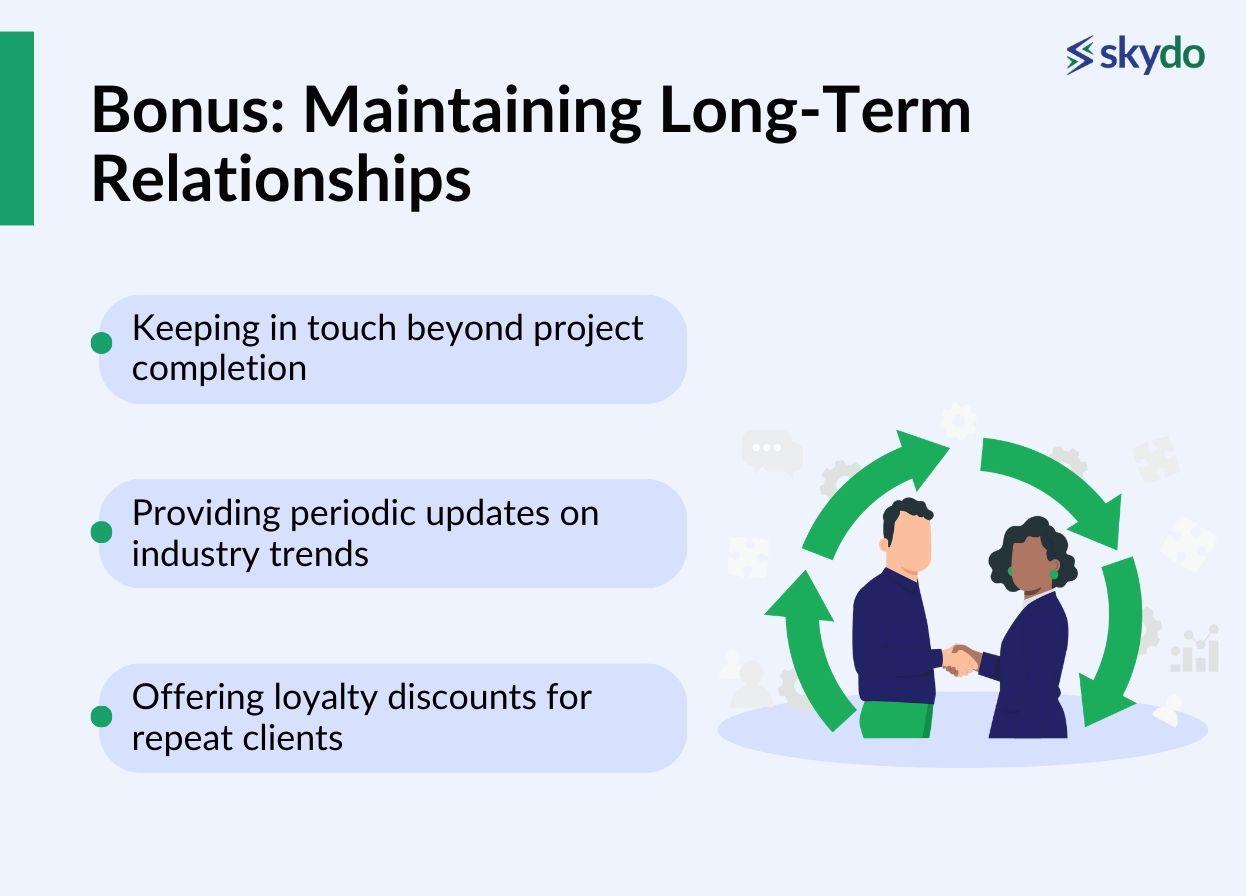
1. Keeping in touch beyond project completion
Once a project is completed, it is best to connect with the client through a personal call or email to discuss the project, any issues that they faced, their overall feedback and anything that you can help with. This helps you understand and address any of their concerns and enhances trust. Moreover, you should also stay in touch with the people who refer clients to you.
2. Providing periodic updates on industry trends
You can engage with your previous clients after project completion by sharing periodic updates through customised emails, blogs or newsletters. This helps in customer engagement, boosts your credibility as an industry expert, enhances trust and increases the chances of them reaching out for future work.
3. Offering loyalty discounts for repeat clients
Offering special discounts or incentives to repeat clients conveys the message that you value client relationships. It also boosts customer loyalty and helps retain customers.
Conclusion
Networking for freelancers is the key to being successful. However, building a strong, diverse and valuable network is not easy. You need to be an active listener, be enthusiastic to collaborate with others, focus on authenticity and do personal branding to gain trust and credibility, and gain customer loyalty. By implementing the right network strategies and networking tactics, you can generate multiple leads for your business and build quality client relationships.












